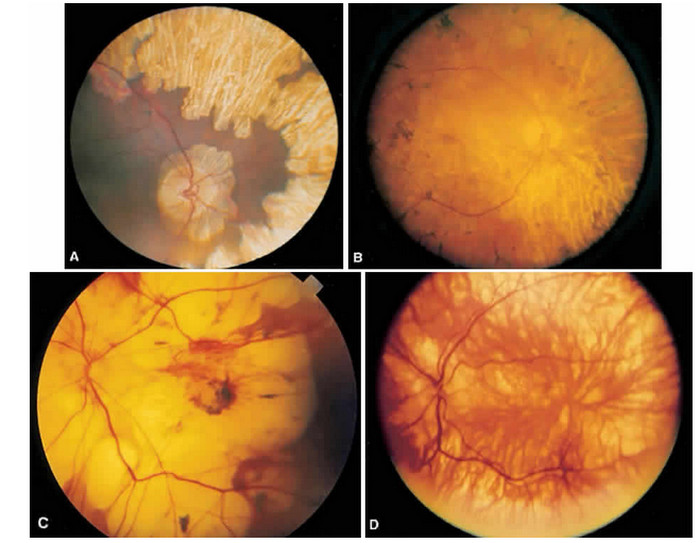What is Choroideremia?
Choroideremia is a rare hereditary ocular disease that results to progressive vision loss. This is an X-linked recessive disorder that mainly affects the male. The male victim basically inherits this degenerative condition from their carrier mothers. In an X-linked recessive inheritance disease, a female carrier will have a 50% chance of affecting her child. A male carrier of the disease shall pass the X-chromosome (affecting chromosome) to their female child making them carriers. However, male carriers will not affect their male offspring.
According to epidemiological studies, the prevalence rate of this disease is in a ratio of 1 is to 50,000/100,000 people. It is also noted that this affects about four percent of conditions that cause blindness.
Choroideremia can be diagnosed through collection of the familial history of illnesses of the patient. An ophthalmologist will also perform diagnostic procedures of the eye. Electroretinography or ERG is a special test performed to confirm choroideremia. This test would help detect any abnormal function of the eyes’ retina. A genetic blood test, currently in the research process, was created in order to diagnose the disorder. The test involves testing for the REP-1 protein presence.
Choroideremia Symptoms
The manifestation of choroideremia involves our vision. Typically, night blindness is experienced by the affected especially in childhood. Peripheral visual field is lost (known as tunnel vision) in the early stages while in later life of the patient, central vision loss develops. The vision changes would vary from one person to another. There are additional manifestations such as mental retardation, obesity and deafness. These added symptoms are rare and is unlikely, for visual impairment is the prominent manifestation of choroideremia.
Pathophysiology of Choroideremia
Choroideremia is an inherited disease from mutations of the CHM gene. Because of this gene, Rab escort protein-1 or simply REP-1 is produced. The REP-1 is a known escort protein which helps in the intracellular trafficking (movement of the important components of the cell). When a problem arises such as the mutation of CHM gene, production of the REP-1 is also altered making its function unattainable which is to escort protein function.
There shall be early apoptosis or cell death. On the other hand, there is a similar protein which helps in protein escort function when REP-1 is nonfunctioning. The REP-2 performs its role but does not reach the function of REP-1. Because of this, cell death may result from inability of Rab proteins to control intracellular trafficking. The cells of our retina are most affected thus leading to vision loss.
Differential Diagnosis of Choroideremia
Picture : Differential diagnosis of choroideremia – A. Gyrate atrophy. B. X-linked retinitis pigmentosa.C. High myopia. D. X-linked ocular albinism.
Choroideremia Causes
Inheriting choroideremia is the main cause. It is known to be connected with the X-linked recessive gene. The mutation of the CHM gene which is located on the X chromosome makes up the disorder. Males have one X chromosome and once they inherit this one altered gene copy, clear manifestations would result to choroideremia.
On the other hand, females affected need to have two copies of the mutated gene before they acquire it considering females are composed of two X chromosomes. Because of such genetic makeup, the male is more susceptible with this disease condition for they only need one mutated gene copy to acquire choroideremia. However, when a female carries one mutated gene, they become carrier of the disease passing it on their children and also they may have some visual affectation but not prominent compared to affected men.
The vision loss experienced by patients, as presented above, is basically a result of cell degeneration that is provides vital effect in the sense of sight. Choroideremia is the term used for the disease as the choroids, layers lining the inside of back part of the eye, are affected. This essential part of the eye contains blood vessel layers that can be found between our retina and sclera. Our retina is affected which is needed for the normal functioning of the photoreceptors. Conversion of electrical impulses would not be attained thus resulting to ineffective sight. In the initial stage of the disease, the retina and choroid deteriorates. As it progresses, photoreceptors follow the deterioration resulting to complete vision lost.
Treatment for Choroideremia
Cure for such disorder has not been found as this is still under research and study. However, treatment provided involves management of the manifestations. The following are the interventions in the treatment plan:
Proper diet
The intake of fresh fruits and green, leafy vegetables are good for the eyesight. Taking of antioxidant vitamin supplements is also suggested. Foods rich in omega-3 should be highlight in the diet. Vitamin A supplements can be helpful, but one should ask first for the doctor’s advice for this prescription.
Counseling
This is necessary especially to help the client cope with his possible depression. It is likely for one to suffer from depression because of the effects of the disease which is progressive. Counseling the family members is also necessary as this can help in the process of recuperation. Necessary assistance should be provided to families who will also be coping as a whole with the disease.
Vision aids
This is provided to patients in order to continue normal activities of the daily life. Training for vision assistance should be rendered to the patient.
Take safety measures
Because the client would manifest night blindness and tunnel vision, proper home safety measures should be provided. The house should not be low lighted. It is suggested that great assistance is to be provided to patients especially when doing some tasks of the daily living.
Genetic counseling.As this is primarily an inherited disorder, known individuals with a familial history of choroideremia should undergo genetic counseling. Carrier testing is done for high risk females. When a woman with familial history is pregnant, they are subject for prenatal examination for genetic counseling.
Choroideremia Prognosis
The outcome of the disease would entirely depend on the severity of the disease condition. Mortality rate is not associated with the disease but vision impairment. One can still live productively after diagnosis of choroideremia, but is highly expected that progression of the disease will happen as the age increases.
References
http://en.wikipedia.org/wiki/
http://ghr.nlm.nih.gov/
www.retinaaustralia.com.au/
http://www.rightdiagnosis.com/



